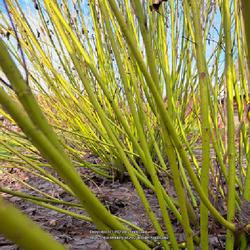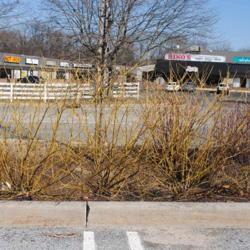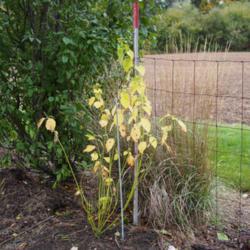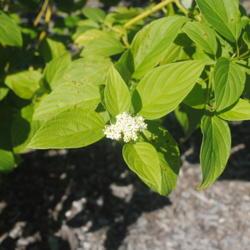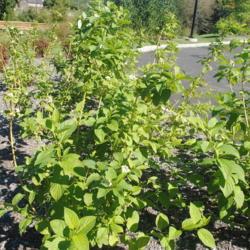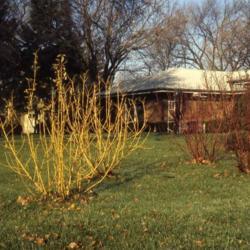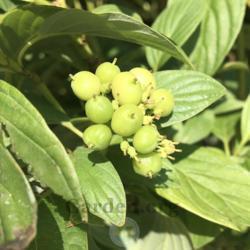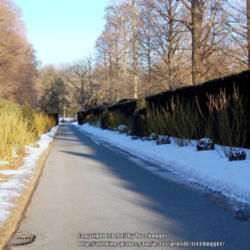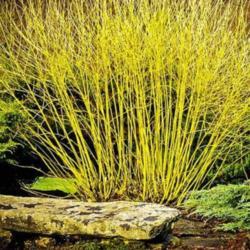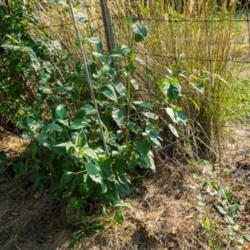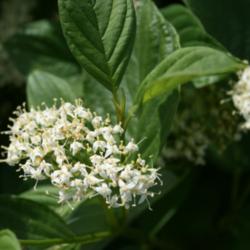General Plant Information (Edit)
| Plant Habit: |
Shrub
|
| Life cycle: |
Perennial
|
| Sun Requirements: |
Full Sun
Full Sun to Partial Shade
|
| Water Preferences: |
Wet
Wet Mesic
Mesic
|
| Soil pH Preferences: |
Slightly acid (6.1 – 6.5)
Neutral (6.6 – 7.3)
Slightly alkaline (7.4 – 7.8)
|
| Plant Height: |
5 to 9 feet |
| Plant Spread: |
6 to 10 feet |
| Leaves: |
Good fall color
Unusual foliage color
Deciduous
|
| Fruit: |
Showy
Edible to birds
Other: white drupes
|
| Fruiting Time: |
Late summer or early fall
|
| Flowers: |
Showy
Fragrant
Blooms on old wood
|
| Flower Color: |
White
|
| Flower Time: |
Late spring or early summer
|
| Suitable Locations: |
Bog gardening
|
| Uses: |
Provides winter interest
|
| Edible Parts: |
Fruit
|
| Wildlife Attractant: |
Bees
Birds
|
| Resistances: |
Flood Resistant
|
| Propagation: Other methods: |
Cuttings: Stem
|
| Pollinators: |
Bees
|
| Miscellaneous: |
Tolerates poor soil
Monoecious
|
| Awards and Recognitions: |
RHS AGM
|
| Child plants: |
2 child plants |
- Yellow Twig Dogwood
- Yellowstem Dogwood
- Golden Twig Dogwood
- Red Osier Dogwood
- Red Twig Dogwood
- Dogwood
- Accepted: Cornus sericea
- Synonym: Cornus sericea subsp. sericea
- Synonym: Cornus stolonifera
Posted by
ILPARW (southeast Pennsylvania - Zone 6b) on Dec 31, 2017 4:50 PM concerning plant:
This nice mutation of the Redosier Dogwood is planted occasionally in yards and landscapes in the Midwest, Mid-Atlantic, and Northeast of the US. This cultivar is sold by a good number of nurseries. It was first discovered at the Arnold Arboretum in Boston, MA, a good number of years ago. Like the regular Redosier Dogwood or the Siberian Redtwig Dogwood, it should not be planted in hills or berms where the soil gets dry, as it gets stressed by drought. It does best in full sun and wet draining soil, as near ponds or creeks. It should not be sheared because that helps cause any bark canker disease to increase. The Yellow-twig Dogwood does suffer some black canker marks on the smooth stems, and the leaves often get some leaf spot disease showing up later in summer. Old stems get big and brown-gray and should be pruned away at the ground level to keep the shrub having its handsome yellow twigs in the winter. In summer the stems turn mostly green and don't show up. It does bear the nice round clusters of white drupes (fruit-berries) in late summer and early fall that are edible by birds.
« Add a new plant to the database
» Search the Dogwoods Database: by characteristics or by cultivar name
« See the general plant entry for Dogwoods (Cornus)
« The Dogwoods Database Front Page
« The Plants Database Front Page
